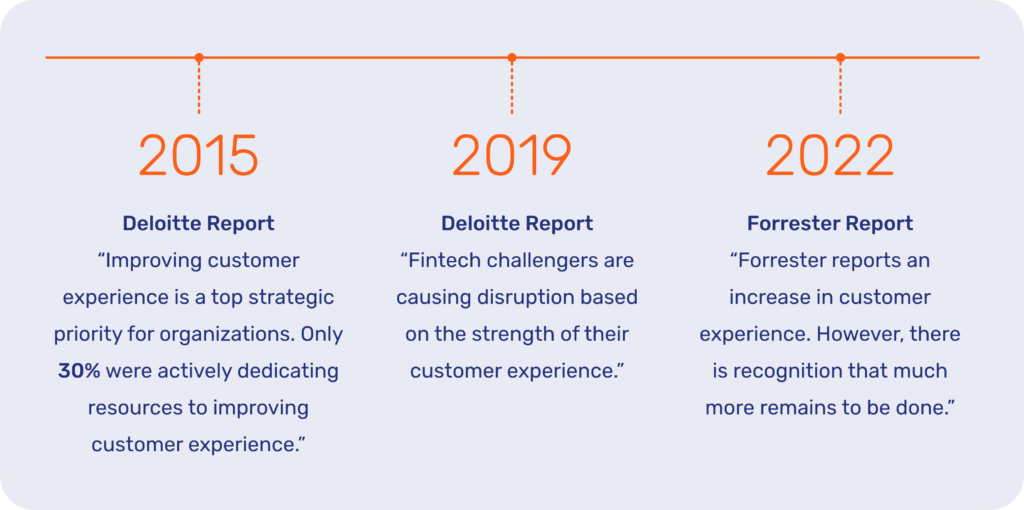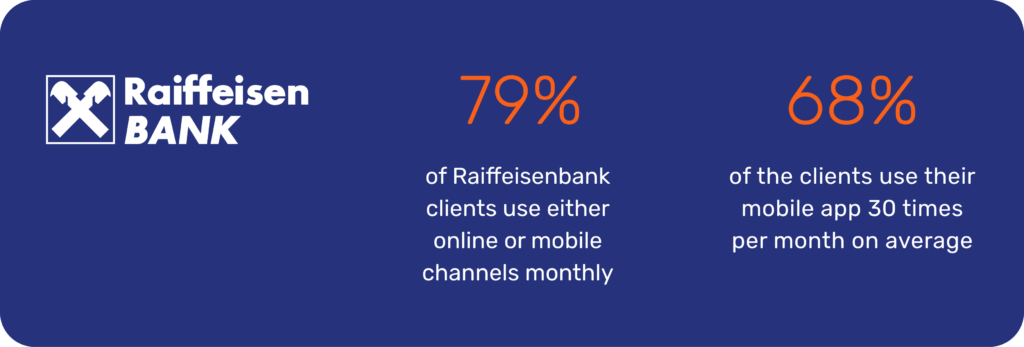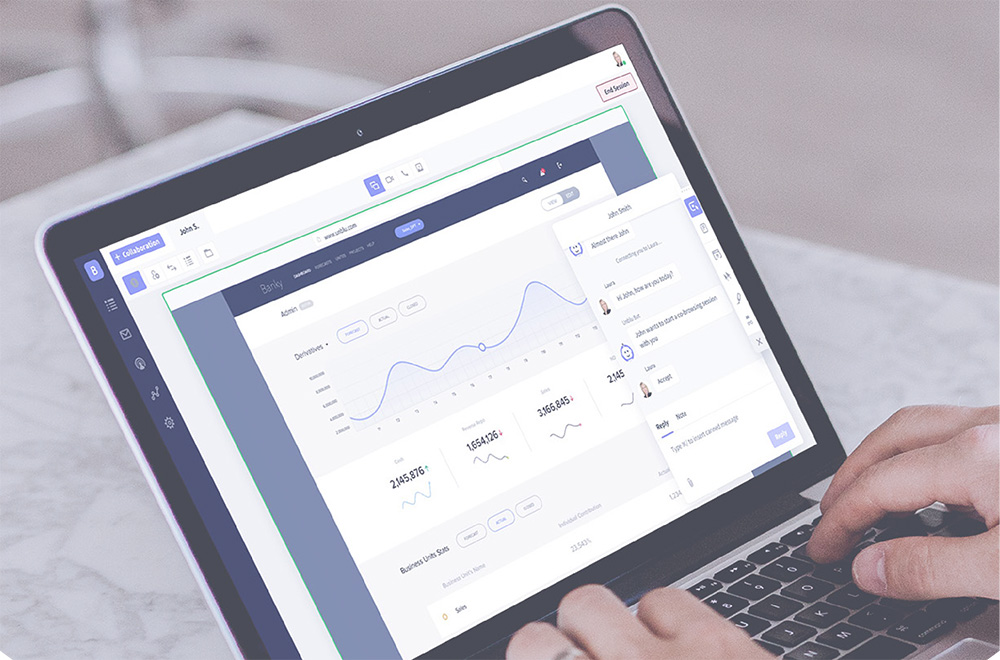While customer lifetime value (CLV) and customer acquisition are central to any business strategy, they shouldn’t be thought of as two separate concepts. Not only should retail banks or credit unions focus on both acquisition and customer retention, but each influences the other. Customer retention, for example, is a strong marker of satisfaction and if a bank experiences high levels of customer churn, the chances are they are also detractors – which has a marked impact on acquisition.
Instead, the argument moves to a more granular level, where retail banks and credit unions must decide how and where to focus their efforts to achieve healthy customer acquisition costs while also maximizing cross sell or upsell opportunities.
The importance of customer service
This begs the question, where should banks focus their resources to keep customer acquisition costs down, while increasing the lifetime value of current customers and securing customer retention? The answer is quite simple: customer support service that leads to product recommendations.
The service that customers receive is paramount in all industries, and banking is no exception. For years, analysts have been talking about how customer experiences are the key to growth without much actual follow up by financial institutions.
In 2015, Deloitte reported that improving the customer experience is a top strategic priority for organizations, and yet only 30% were actively dedicating resources to improving it. In 2019, another Deloitte report talks about how fintech challengers are causing disruption on the strength of their customer experience. In 2022, Forrester reports that there’s an increase in customer experience – but that much more remains to be done.

Changing mindsets about customer service support
While leaders recognize its importance, there appears to be a tendency to put customer service on the back burner. The reason for this is hard to pin down, but it may have to do with the ingrained notion that customer service – particularly a call center situation – is inherently a business cost.
There is some truth to this as customer support is a service that all businesses must provide to ensure continued operations. However, just because it is a cost doesn’t mean that it can’t also perform as a revenue stream. This is something we’ve spoken about before, while also providing tips on how to get started.
But simply applying best practices to your current scenario isn’t enough. Retail banks or similar financial institutions need to embrace a mindset shift that allows them to fully invest both strategically and financially in the potential of customer service.
Service-as-revenue: The Raiffeisenbank approach
Raiffeisenbank is a successful example of customer support being leveraged to increase cross sell or upsell opportunities. Based in Prague, Czech Republic, the universal bank is the 4th largest in the Central and Eastern Europe markets, where it serves over 1,400,000 current customers.
Raiffeisenbank is known for their strong digital focus and mindset of innovation and their customer base expects a certain level of digital accessibility. In fact, 79% of their customers use online or mobile channels every month and an incredible 68% use the mobile app at least 30 times per month on average.
Reputation is key here, and maintaining it was at least part of the definitive impulse that drove the leadership team to invest in stronger customer service operations.

Service excellence as a baseline
We’ve spoken time and again about the importance of meeting customer expectations and needs as a vital part of any digital banking initiative. As customers embrace digital or AI tools, their expectations change and they expect greater levels of convenience. Compounding this is the issue of trust, which is intrinsically tied to service quality – particularly unified, secure communications.
What this means is that for any upsell or cross sell opportunity to be viable, there needs to be nothing short of service excellence as a baseline. Raiffeisenbank understood this fact and began their initiative by offloading the strain on call centers.

Call centers
Call centers are slow channels by nature, with agents only able to deal with one individual at a time and must give them all of their attention. This is ideal for additional product conversations or when resolving more complex issues; however, when it comes to more simple queries, there are more efficient methods.

Conversational AI and Live Chat
This is why Raiffeisenbank decided to implement the Live Chat functionality, which allows multiple conversations to take place at once and subsequently remove the strain from more traditional channels. The data gained from the conversations also enabled the agents or sales representatives to train the chatbot to real customer intents, something which has only gotten better with improvements in Conversational AI.

Co-Browsing
The implementation of the Live Chat digital channel worked – but changing trends channel preferences had a knock-on effect. With a more frictionless option for support, the bank found that there was an overall increase in inquiries. To address this current situation, Raiffeisenbank then implemented Co-Browsing, which allowed agents to offer top remote collaboration experiences to provide more personalized support and answers to customer questions.
Capitalizing on good will to sell financial products
With a robust customer service offering and stronger banking customer relationships, Raiffeisenbank were able to begin implementing cross selling strategies

Alongside this, the bank also identified website pages that had a high purchase intent and, instead of having the chatbot as the first point of contact, opted to prioritize the Live Chat channel. This meant that individuals with high conversion potential could get direct access to a bank staff member.
What were the results?
During the tracking period, a total of 12,000 Live Chat sessions took place. A mix of the bank’s CRM and agent intuition told them that 6,400 of these conversations showed relevant suggestions for cross sell product potential.
In the end, this led to 320 new deals or 5% conversion rate in August 2022 – a number that rose to 8% the following September.

Sustainable cross selling in the banking industry
Perhaps the most important factor to remember is that this approach to identifying upsell or cross selling opportunities is inherently sustainable as it is built into a service requirement. Every bank must have service channels in place to ensure customer satisfaction.
However, how the financial institution chooses to look at this service necessity is the defining factor. Do you look at it as a necessary cost center that is simply a drain on resources or do you embrace the potential of service excellence?
When done correctly, it allows banks to gain access to a cost-effective, long-term revenue stream and drive future profits.Please visit our website for more information on the Raiffeisenbank case study and its potential for the financial services industry.





 Interaction Management Hub
Interaction Management Hub Secure Messenger
Secure Messenger Video & Voice
Video & Voice



